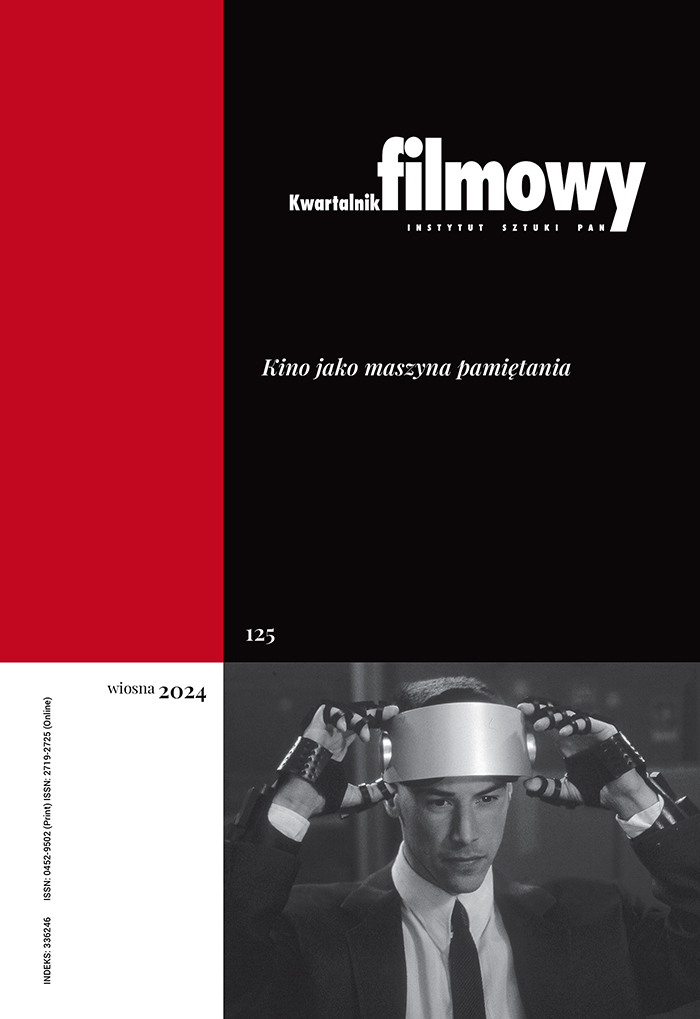“5 x 2”: Feminine and Masculine Versions
Abstract
François Ozon’s 5x2 is constructed in an interesting way. It tells the story backwards, which means it decontextualizes the recounted events. One may assume that as they are presented in reverse chronology at least some viewers may have problems in contextualizing some events. As a result, some actions of the main hero (especially his) seem to be hardly intelligible. Ozon has also edited the director’s copy (available only in a DVD set) that tells the same story in chronological order (the changes are practically insignificant). It is hard to say why the other version was made. One may think that it was made for viewers with a lower IQ. The rub is that in this way the meaning of the story is totally changed - that’s why Sikora says we may speak about two versions of the same story: the original one could be a feminine (more interesting and thought-provoking) version and the other chronological story could be called a masculine one, definitely less interesting also psychologically.
Keywords:
François Ozon, variants, French cinemaReferences
Nie dotyczy / Not applicable
Google Scholar
Authors
Sławomir Sikorakwartalnik.filmowy@ispan.pl
University of Warsaw Poland
Adiunkt w Instytucie Etnologii i Antropologii Kulturowej (UW), autor książki Fotografia. Między dokumentem a symbolem (2004). Publikował m. in. w „Kontekstach”, „Kwartalniku Filmowym”, „Czasie Kultury”, „Roczniku Historii Sztuki”, „Dialogu”, „Latarniku”.
Statistics
Abstract views: 568PDF downloads: 100
License
Copyright (c) 2006 Sławomir Sikora

This work is licensed under a Creative Commons Attribution 4.0 International License.
The author grants the publisher a royalty-free non-exclusive licence (CC BY 4.0) to use the article in Kwartalnik Filmowy, retains full copyright, and agrees to identify the work as first having been published in Kwartalnik Filmowy should it be published or used again (download licence agreement). The journal is published under the CC BY 4.0 licence. By submitting an article, the author agrees to make it available under this licence.
In issues from 105-106 (2019) to 119 (2022) all articles were published under the CC BY-NC-ND 4.0 licence. During this period the authors granted a royalty-free non-exclusive licence (CC BY-ND 4.0) to use their article in „Kwartalnik Filmowy”, retained full copyright, and agreed to identify the work as first having been published in our journal should it be published or used again.
Most read articles by the same author(s)
- Sławomir Sikora, Beyond Form and Content: Towards Materiality , Kwartalnik Filmowy: No. 115 (2021): Form Film, Content Film
- Sławomir Sikora, “Nie sądzić” and “Wielki strach”: Two Short but Important Films , Kwartalnik Filmowy: No. 112 (2020): Polish Documentary, Polish Animation
- Sławomir Sikora, Michael Haneke’s “Cache” (“Hidden”) as an Experimental Performative “Documentary” , Kwartalnik Filmowy: No. 82 (2013): Experiment: Film and Audiovisual Arts
- Sławomir Sikora, Rouch and His Gang on the Paths of Decolonization , Kwartalnik Filmowy: No. 128 (2024): Decolonizing Film Discourses
- Sławomir Sikora, Avant-Garde and Tradition in the Shadow of Terrorism: Transcultural Cinema of Leonard Retel Helmrich , Kwartalnik Filmowy: No. 70 (2010): Avant-Garde and Film
- Sławomir Sikora, Michael Haneke’s “Love” From Another Angle: Aporia of Corporeality , Kwartalnik Filmowy: No. 83-84 (2013): Body in Film
- Sławomir Sikora, Coloured Threads: “The Stitches Speak” , Kwartalnik Filmowy: No. 74 (2011): Film Objects
- Sławomir Sikora, The Colours of Time , Kwartalnik Filmowy: No. 45 (2004): Sacrum in Film
- Karolina Dudek, Sławomir Sikora, “Destiny Carried Me...”: Andrzej Dybczak in Conversation with Karolina Dudek and Sławomir Sikora , Kwartalnik Filmowy: No. 64 (2008): Film Image, Image in Film (part I)
- Sławomir Sikora, A Purse, a Tie or Incarnated Memory (“In the Mood for Love”) , Kwartalnik Filmowy: No. 34 (2001): Cinema at the Turn of the Century











